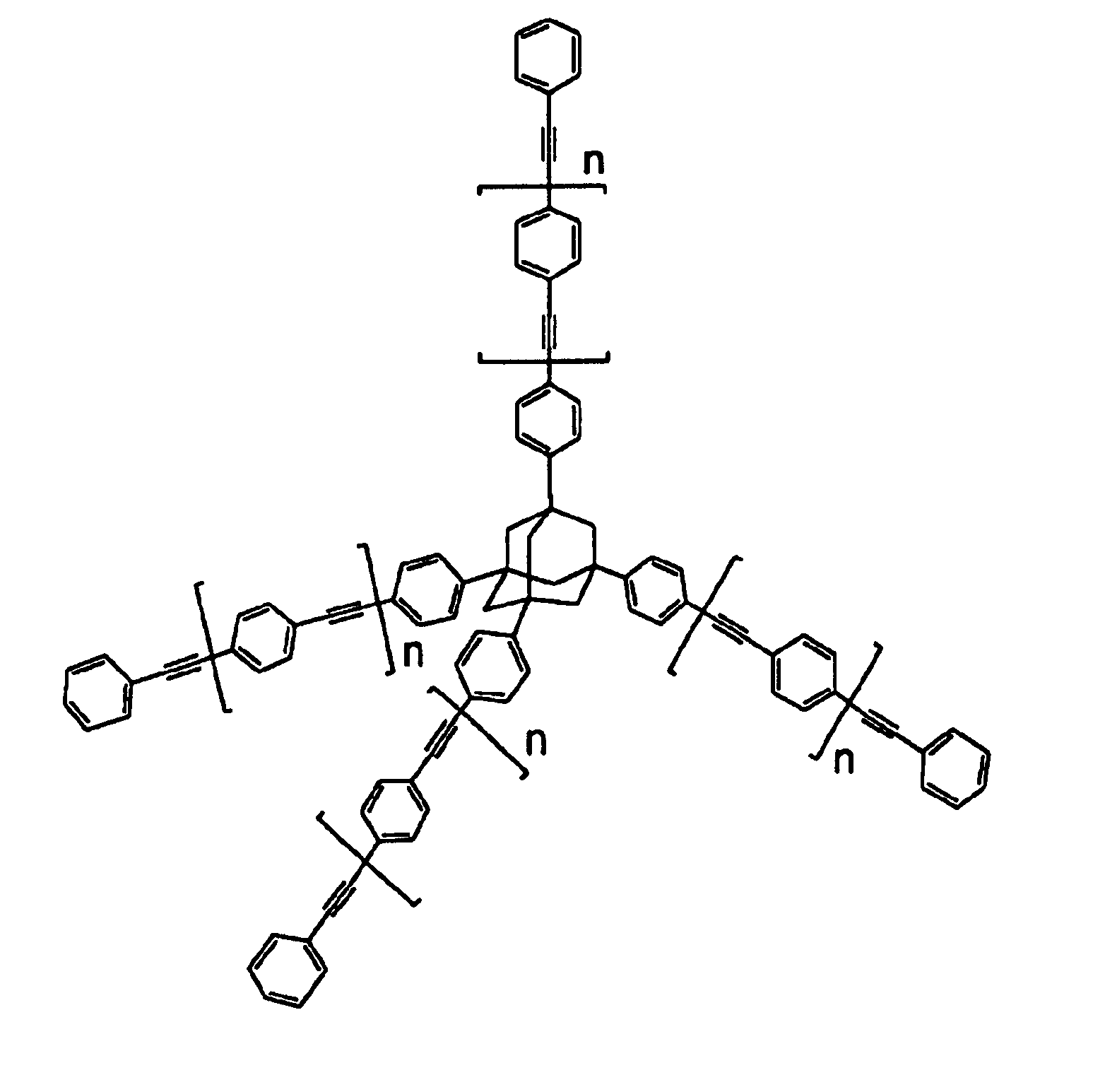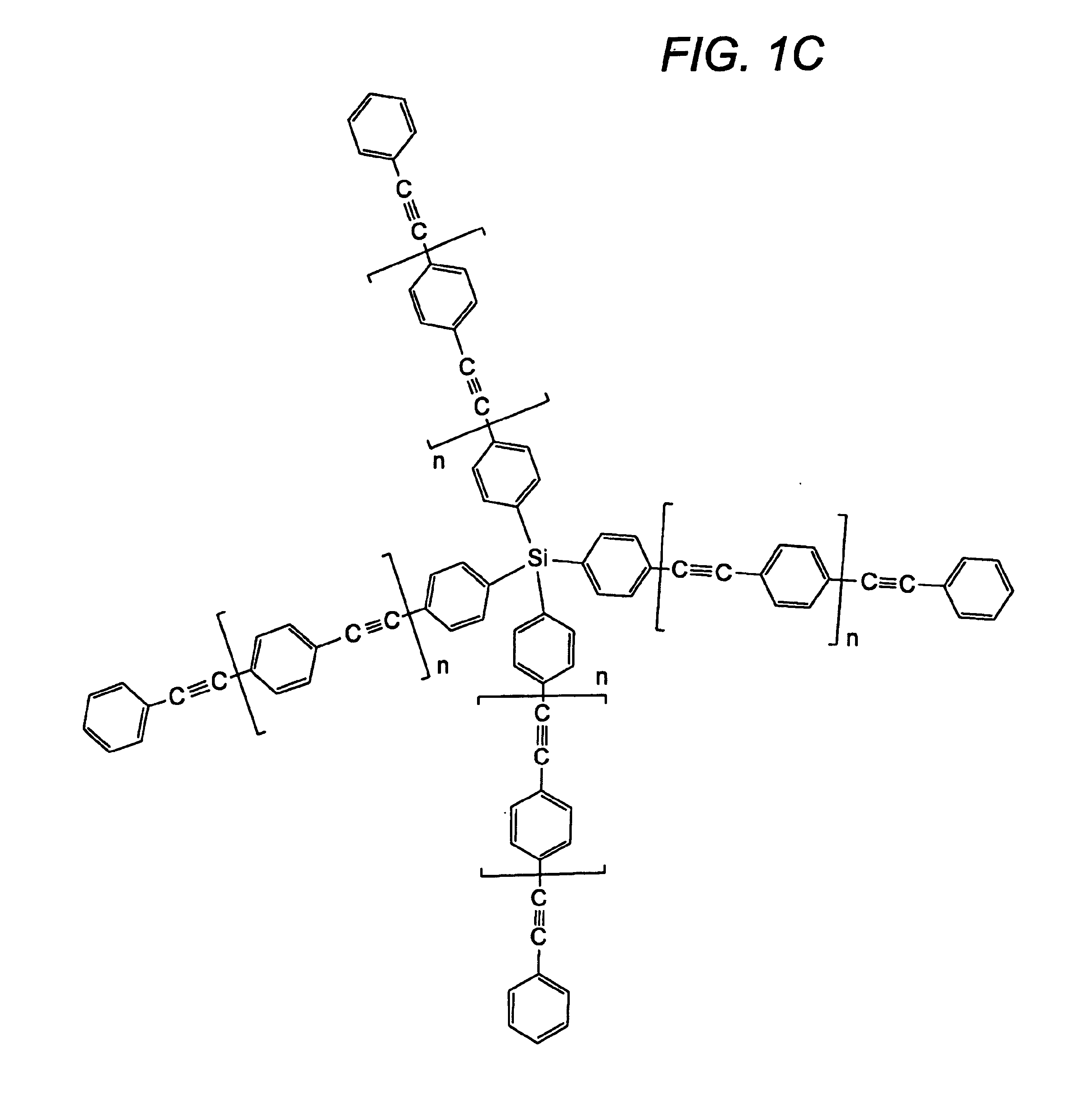Compositions and methods for thermosetting molecules in organic compositions
a composition and organic technology, applied in the field of dielectric constant reduction, can solve the problems of limiting the choice of available materials, affecting the quality of thermosetting molecules, and difficult to achieve the effects of reducing the density of crosslinked structures, increasing the length of arms, and increasing the void volum
- Summary
- Abstract
- Description
- Claims
- Application Information
AI Technical Summary
Benefits of technology
Problems solved by technology
Method used
Image
Examples
example 1
[0040]
Adamantane is brominated to TBA following a procedure as previously described in J. Org. Chem. 45, 5405-5408 (1980), by Sollot, G. P. and Gilbert, E. E.
TBA was reacted with bromobenzene to yield tetrakis(3 / 4-bromophenyl)adamantane (TBPA) as described in Macromolecules, 27, 7015-7022 (1990) by Reichert, V. R. and Mathias L. J. The reaction resulted in the formation of various byproducts. HPLC-MS analysis showed that the yield of the desired TBPA was approximately 50%, accompanied by 40% of the tribrominated tetraphenyl adamantane and about 10 % of the dibrominated tetraphenyladamantane. Unexpectedly, however, when the product mixture was subjected to fresh reagent and catalyst (bromobenzene and AlCl3, 1 min at 20° C.), TBPA was obtained in yields of approximately 90%.
TBPA was reacted with phenylacetylene to yield the final product tetrakis(tolanyl)adamantane following a general reaction protocol for a palladium-catalyzed Heck ethynylation.
example 2
[0041]
[0042]In a 500-mL 3-neck round-bottom flask, equipped with an addition funnel and a nitrogen gas inlet, 4-iodobromobenzene (25.01 g, 88.37 mmoL), triethylamine (300 mL), bis(triphenylphosphine)-paladium[II] chloride (0.82 g) and copper[I] iodide (0.54 g) were added. Then, a solution of phenylacetylene (9.025 g, 88.37 mmoL) in triethylamine (50 mL) was added slowly, and the temperature of the solution was kept under 35 C under stirring. The mixture was stirred for another 4 hours after addition was completed. The solvent was evaporated on the rotary evaporator and the residue was added to 200 mL of water. The product was extracted with dichloromethane (2×150 mL). The organic layers were combined and the solvents were removed by rotary evaporator. The residue was washed with 80 mL hexanes and filtered TLC and HPLC showed a pure product (yield, 19.5 g, 86%). Additional purification was performed by short silica column chromatography (Eluent is 1:2 mixture of toluene and hexanes)....
PUM
| Property | Measurement | Unit |
|---|---|---|
| Dielectric constant | aaaaa | aaaaa |
Abstract
Description
Claims
Application Information
 Login to View More
Login to View More - R&D
- Intellectual Property
- Life Sciences
- Materials
- Tech Scout
- Unparalleled Data Quality
- Higher Quality Content
- 60% Fewer Hallucinations
Browse by: Latest US Patents, China's latest patents, Technical Efficacy Thesaurus, Application Domain, Technology Topic, Popular Technical Reports.
© 2025 PatSnap. All rights reserved.Legal|Privacy policy|Modern Slavery Act Transparency Statement|Sitemap|About US| Contact US: help@patsnap.com



